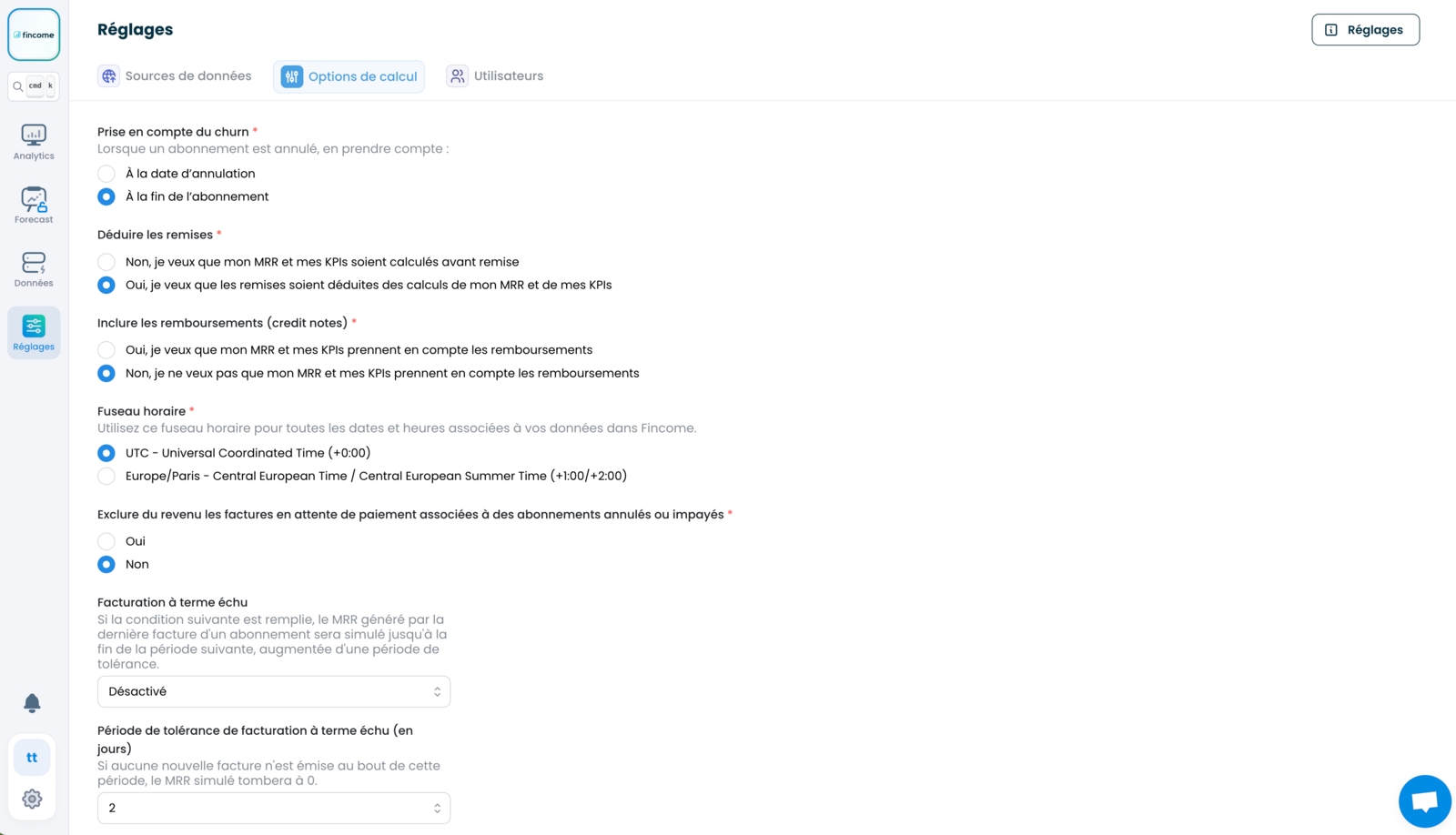Fincome data vs billing data
Understand why your Fincome data differs from your billing system. Discover common discrepancies and how to adjust them for accurate MRR.
Tracking MRR is essential for recurring-revenue businesses, particularly to assess the health of your company on a regular basis.
Calculating MRR may seem simple and can be easily available on platforms like Stripe or Chargebee; however, it is a metric that requires a lot of precision to be reliable and useful, and that is the whole point of the Fincome solution.
Differences between the MRR figures from your billing system and those from Fincome can exist. These variations are explained by the way each billing system determines recurring revenue.
In this article, we detail the main differences and provide resources to help you understand the discrepancies you observe, in particular regarding differences in:
MRR
number of customers
Calculation settings on your Fincome dashboard

First of all, the calculation of your Fincome metrics can be adjusted according to certain parameters. The choice of these parameters may depend on how you bill or preferences on how to analyze your metrics. To adjust these settings, go to the "Settings" > "Calculation options" section.
Differences in MRR
The MRR from your billing system may differ from what you see in Fincome because of the way data is processed. We have listed below the most common reasons:
Recognition of cancellations
The recognition of cancellations can differ depending on how your billing system handles cancellations, which can lead to differences in the MRR calculation. We invite you to refer to the article on churn recognition.
Discounts
By default, Fincome deducts discounts from the MRR calculation in order to present an MRR net of those discounts. This MRR is generally considered to be more representative of the company's activity. However, you can configure the MRR and KPI calculations to exclude the impact of discounts in the "Settings" part of the platform.
Refunds (credit notes)
Among the different billing systems, only Stripe deducts refunds from the MRR calculation. For all other billing systems, refunded transactions are not deducted from MRR. By default Fincome does not deduct refunds but provides you the option to do so in the "Settings" section if you use Stripe Billing or Chargebee.
Invoices with failed payment
Some billing systems exclude invoices with failed payments from the MRR calculation. Stripe does this only in the case of a failed final retry. Fincome includes them in the MRR calculation, even if a transaction is marked as failed, insofar as an invoice was issued and the payment is due to you.
Paused invoices
When billing for one of your customers is paused, they are considered churned as of that date in Fincome. We are working on this topic to offer more flexibility.
Non-recurring billing
Non-recurring billing does not contribute to MRR in Fincome; however, your billing system may include non-recurring billing in the MRR calculation and thus create a source of discrepancies. We invite you to refer to the article "What is the difference between MRR and Revenue?" for more details.
VAT and other taxes
Fincome does not include VAT or any other taxes that might be specified on invoices in the MRR calculation by default. However, Fincome gives you the possibility to view MRR including tax by choosing that setting in the "Settings" section.
Customer status
As long as a customer is in a trial period and has not yet been invoiced for an amount greater than €0, they are not captured in Fincome. When a customer has an outstanding payment, Fincome assumes good faith and they continue to contribute to MRR.
Differences in the number of customers
The most common discrepancy in the number of customers is explained by the fact that Fincome does not count customers who have not been billed. For a customer to be considered active and included in Fincome's customer count, the billing attributed to them must be greater than €0. Customers on free trials or receiving a 100% discount therefore do not appear as paying customers in Fincome. Customers with non-recurring billing contribute to non-recurring revenue, which is visible in the Non-recurring Revenue section.
When a customer has a late or failed payment, Fincome assumes good faith and continues to count them in the number of customers.
Last updated